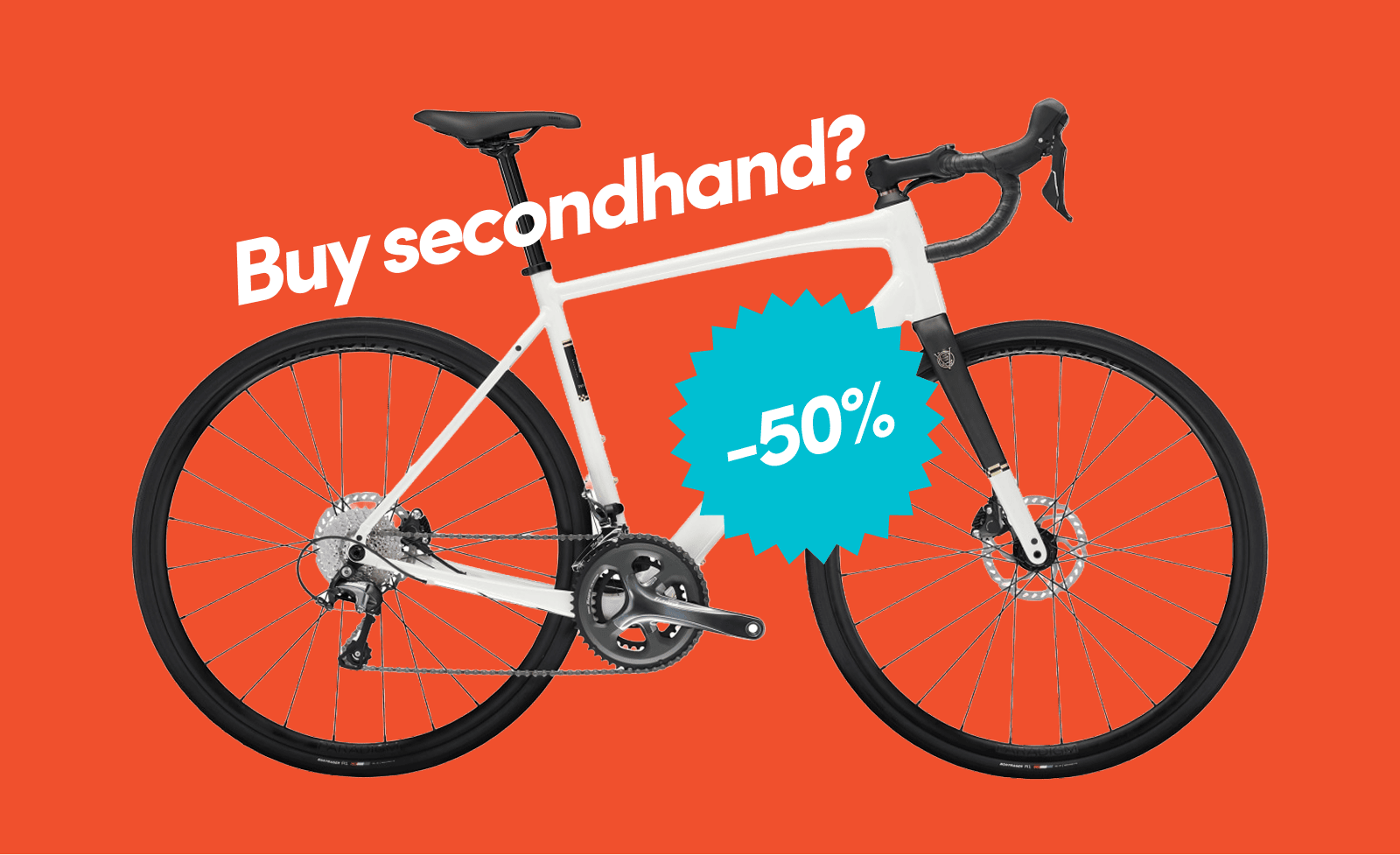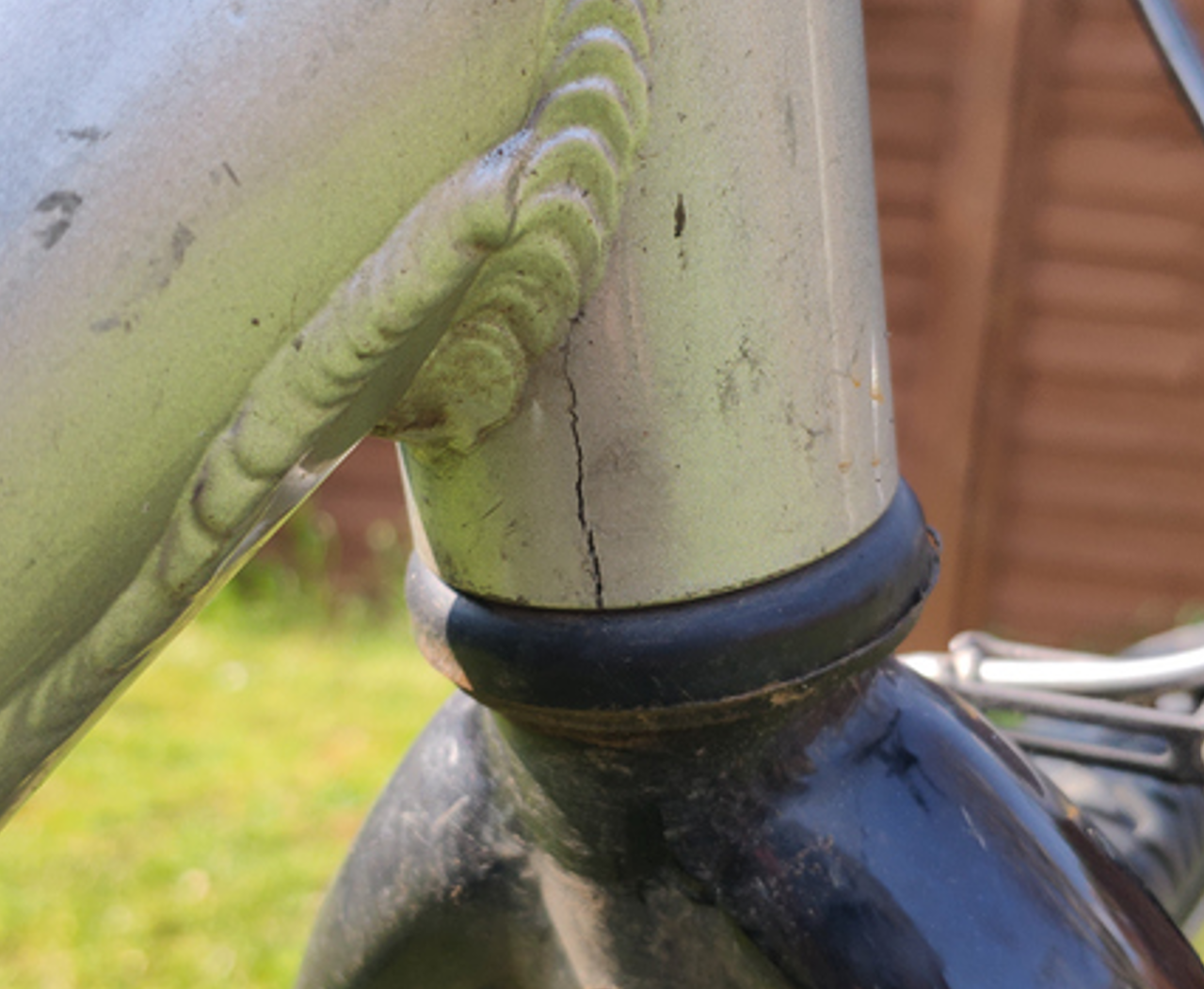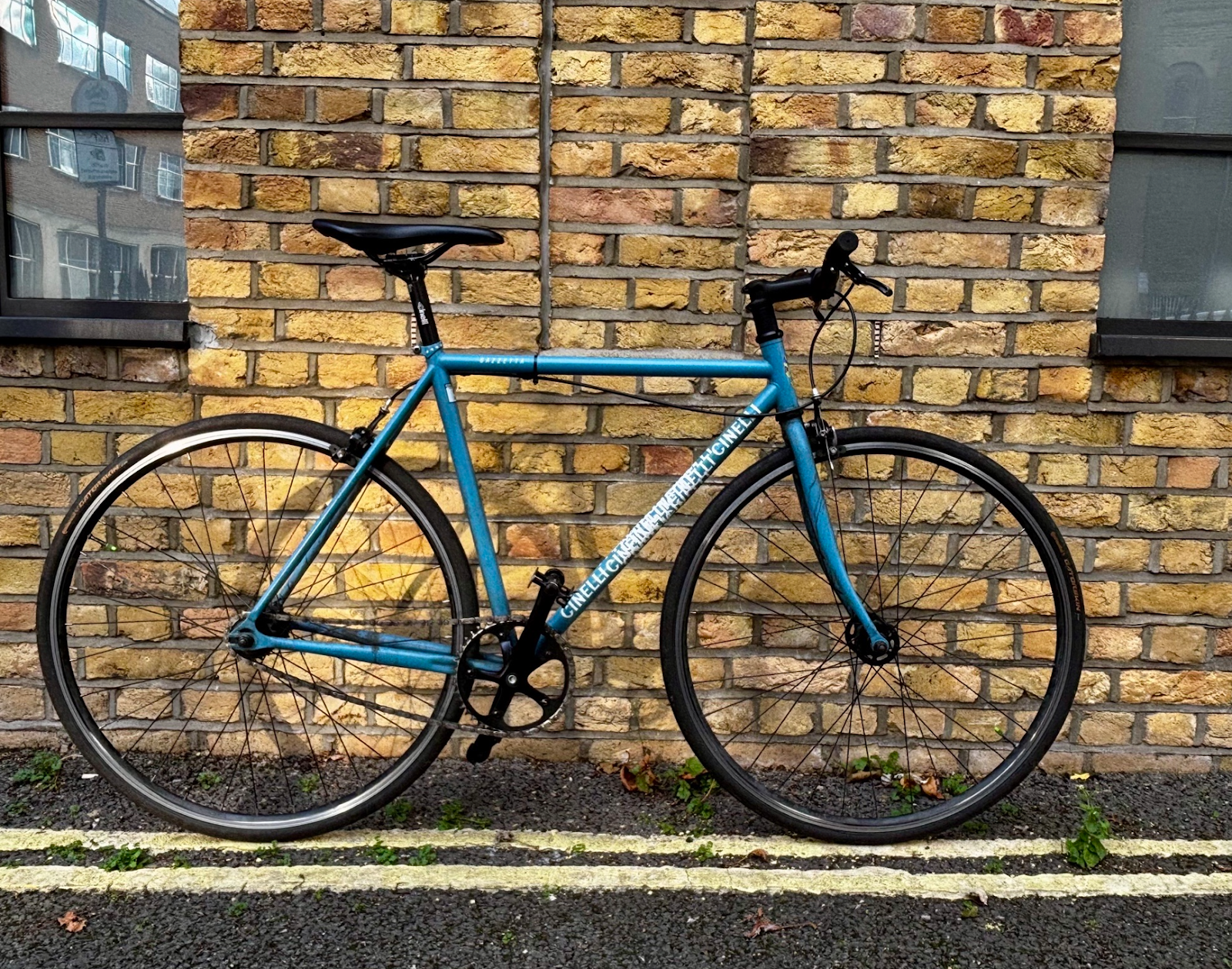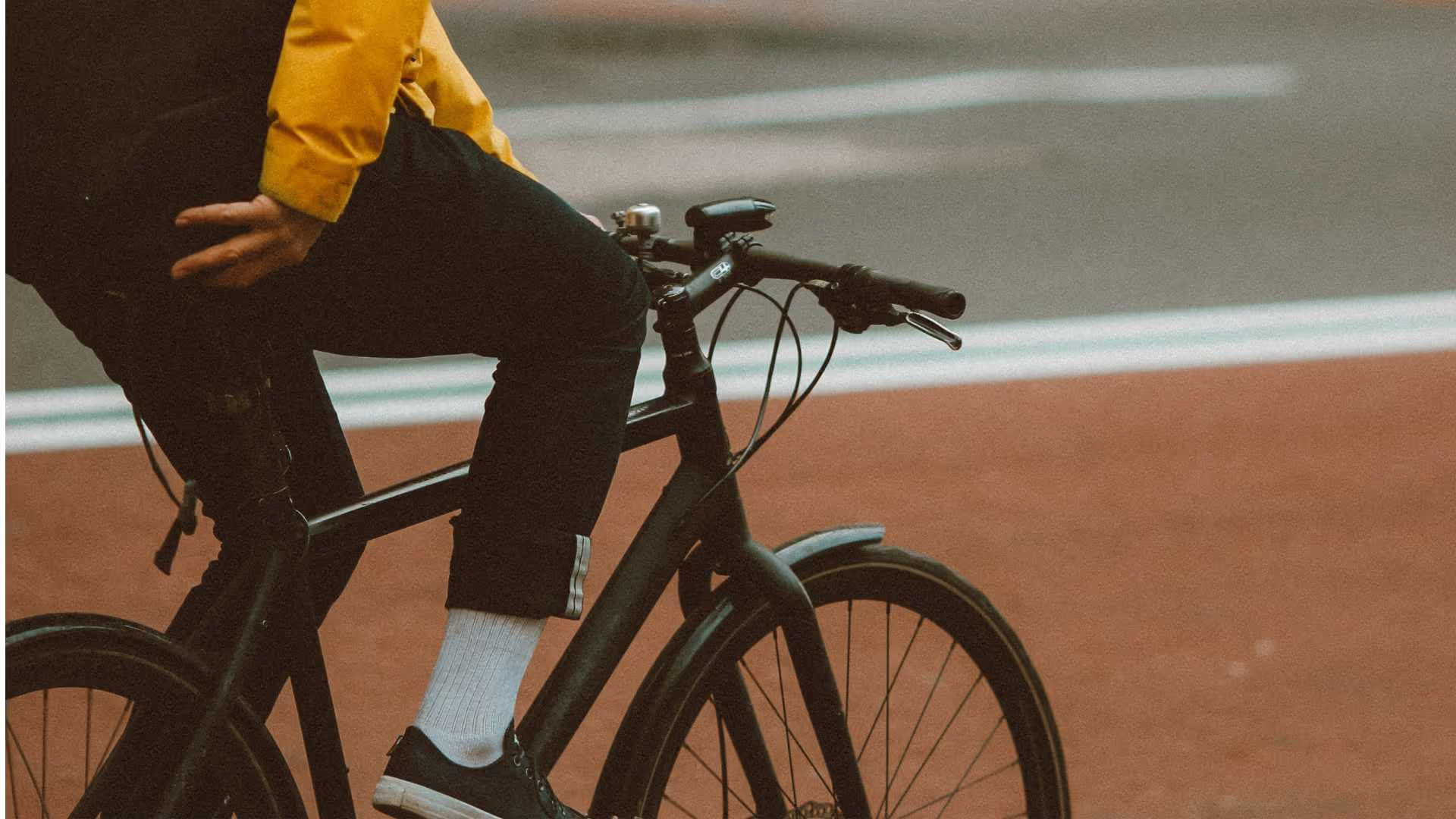Buying a secondhand bike? Here is your complete guide
Want to save £500-£2000 on your next bike? Secondhand bikes can offer the same performance as new ones, and possibly at half the price.

Want to save £500-£2000 on your next bike? Secondhand bikes can offer the same performance as new ones, and possibly at half the price. But many used bikes have hidden issues that could cost you in repairs. This 8-minute guide shows you exactly what to check before you buy.
About the author
Yannick Read is a cycling writer, inventor, and advocate. As an inventor, he is known for creating unique, bicycle-related vehicles, including the "Paravelo" flying bicycle, the "QTvan" (the world's smallest caravan), and the "Bike Mine" anti-theft alarm.Yannick has also been involved in advocacy for cycling, working with the UK's national cyclists' organisation, CTC, to promote events like Bike to Work week.
In a hurry? Here is your quick 5-step secondhand bike buying checklist
Frame
Check for cracks/dents, especially near welds and the bottom bracket.
Wheels
Spin both. Look for wobbles or concave (dished) rims.
Stolen?
Get the frame number and check it on Project529 or BikeRegister before paying.
E-Bike?
Ask for a battery health report. Test all power modes.
Price
Aim for 40-60% of the original price. Check the price range on eBay's sold listings.
Walk into a bike shop and it’s hard not to be dazzled. The lights glint off polished frames, this year’s colours pop, and neat rows of “special offer” stickers make it all feel just within reach. It’s designed to feel that way: exciting, tempting, a little intoxicating.
But with so many of us watching what we spend, there’s another way to enjoy the freedom of life on two wheels.
A few months ago, I bought a nearly new Cinelli single-speed through a council-run salvage project for £140 – a saving of over 80% on a bike that would cost £750 new. The steering felt a little stiff on the test ride, but a few drops of oil later it rode beautifully. It was a reminder that with a bit of care and a good eye, a used bike can deliver the same joy as a brand-new one for a fraction of the price.
The secondhand market is bursting with bargains – from barely ridden commuters to bikes for weekend adventures – that deliver the same joy for far less money. And with a few simple checks, buying used can be every bit as safe and satisfying as buying new.
Online marketplaces, community projects and certified refurbishers make it easy to buy a secondhand bike in the UK that suits your needs and budget. And once you’ve found your perfect match, Sundays cycle insurance covers used and refurbished bikes with the same protection as new.
The rise of the secondhand bike
If you’ve noticed fewer shiny new bikes on the road lately, you’re not imagining it. In 2024, around 1.45 million new bicycles were sold in Britain – the lowest number since the 1970s. Rising prices, tighter budgets and a dip in everyday cycling since Covid – particularly among children – have all played a part.
But while new bike sales have slowed, the used-bike market has blossomed. Sites like eBay and Facebook Marketplace are packed with choice, from vintage racers to almost-new e-bikes, while specialist refurbishers give older models a new lease of life.
What was once a niche market has become mainstream. Buying secondhand is no longer just for bargain hunters; it’s part of the same cultural shift that’s made used clothing apps like Vinted and Depop so popular. People are rethinking what it means to buy “new” – valuing sustainability, quality and reuse over constant replacement. Research from Mintel shows that affordability is the main reason people look for used bikes for sale in the UK. Industry estimates suggest between 1.5 and 2 million secondhand bikes change hands each year – a market worth around £300 million. Add in refurbished e-bikes and higher-end models and the true value is likely higher still.
More than just a money-saver, this marks a shift in how people think about cycling. Instead of chasing the latest model, more riders are keeping good bikes in use for longer through repair, maintenance and resale. It’s good for your wallet, good for the planet, and keeps more of us riding.
Before you search: know your fit, type, and style
It's easy to get fixated on price, but the biggest bargain is a bike you'll love to ride. A 60% off "steal" that's the wrong size is a recipe for discomfort, poor handling, and a bike that will likely gather dust. As the legend Sheldon Brown wrote in his buying and selling guide, ‘bike size is the single most important factor.’
Before you look at a single ad, you must know:
- Your size
This is non-negotiable. Don't guess. Use an online fit calculator, or better yet, visit a local bike shop and ask them to quickly size you. Knowing you need a "56cm" road frame or a "Large" mountain bike frame narrows your search and prevents a costly mistake. - Your type
Be specific. Don't be tempted by a sleek (but cheap) road bike if your reality is a 3-mile commute in the rain. You need a hybrid or commuter that takes mudguards and a rack. - Your "love" factor
Don't underestimate this. A bike you think looks great – whether it's the colour, the brand, or style – is a bike you'll be excited to ride. It’s a big part of why I bought my Cinelli single-speed; I loved its timeless, practical, and understated design. You're buying a joy machine, not just a tool. Find the right fit, for the right purpose – one that you'll be proud to own.
Where to buy a used bike – and what to expect
There’s no shortage of places to buy a used bike safely in the UK. The key is to pick a source you trust.
Trusted refurbishers such as Cycle Exchange and Recycle Your Cycle sell fully inspected bikes with a warranty. You’ll pay a bit more, but the peace of mind can be worth it. Marketplaces like eBay, Facebook and Gumtree offer bargains, though you’ll need to be cautious. Always ask for a frame number or proof of purchase before you hand over money; if a deal looks too good to be true, it probably is.
For further advice, Cycling UK – the charity formerly known as the Cyclists’ Touring Club (CTC), which has been guiding riders on bike buying since 1876 – offers an excellent online guide to buying a secondhand bike. Its community forum also includes a popular For Sale section where members list bikes and parts, often with detailed descriptions and fair prices.
Some bike shops like Balfe’s, sell trade-ins or ex-demo models, while police auctions can offer excellent value if you’re confident about identifying quality bikes.
It’s not only the police, either. Some local councils run their own reuse or resale schemes, selling donated and house-clearance items – often including bikes. For example, the New to You project in the Borough of Poole gives everyday items a new home at affordable prices, helping to support local people. These outlets can seem like well-kept secrets, so it’s worth asking your local council if they run anything similar.
Community projects, charities and co-ops such as Full Cycle in southwest London refurbish donated bikes and sell them affordably, supporting local riders while providing training and employment for community mechanics.
Secondhand bike inspection checklist
You don’t need to be a mechanic to understand how to check a secondhand bike, but what you look for depends on the type of bike you’re buying.
"Buyer beware: Think about the situation. Think about the price. Is it too good to be true?" — Francis Cade
Road bikes
Lift the bike slightly and drop it from a few inches – any creaks or rattles might point to loose components. Spin both wheels to make sure they run straight and don’t wobble, and inspect the rim or brake discs for wear or damage. Check the frame carefully for cracks, particularly around the bottom bracket (where the pedals turn) and the headset (where the handlebars meet the frame). A little cosmetic wear on the paint is fine; bubbling or hairline cracks are not.

Mountain bikes
Check suspension by compressing the fork and rear shock (if fitted). The movement should be smooth and return evenly with no oil leaks. Look for dents or rippling in the frame tubes – a sign of a hard crash. Spin the wheels and inspect the rims for dings from rock strikes, and check that the gears shift cleanly through the full range.
Hybrid and commuter bikes
These often lead hard lives, so focus on the basics: brake pad thickness, chain wear, and wheel alignment. Lift the bike by the saddle and turn the handlebars – if the steering feels gritty or notchy, the headset bearings may be worn, or it could simply be a sign the bike’s been unused for a while and just needs lubrication. Look for signs of corrosion around bolts and fittings, especially on bikes stored outdoors.
To learn more about how to choose a commuter, see our guide on what to look for when buying your first commuter bike.
Touring and cargo bikes
Touring frames are built for strength, but check all mounting points for racks, guards and bottle cages – stripped threads can be costly to repair. Spin the wheels and inspect the rims for concave wear from rim brakes. Many rims have a small groove or line running around the braking surface – this is a wear indicator. If the groove has disappeared or feels shallow, the rim may be worn thin and should be replaced. On cargo bikes, check the load area for cracks or fatigue, and test whether the steering feels stable when loaded.
E-bikes
E-bikes are becoming more popular, but they’re more expensive and complex than regular bikes, so it’s natural to feel cautious about buying one secondhand. Before you commit, make sure the motor runs smoothly and quietly when you pedal and that the assistance cuts in and out evenly. If possible, ask to see a battery health report – this will show how many times the battery has been charged and how much power it still holds.
Many e-bike brands such as Bosch, Shimano and Yamaha offer diagnostic systems – sometimes through a smartphone app, and sometimes via a bike shop’s service computer. These tools can show details like battery charge cycles, capacity and any error codes. If the bike’s display shows battery health, check for even readings across cells. A 36-volt battery should read around 42 volts when fully charged; a large drop suggests ageing cells. Finally, take it for a ride – short range, power loss or uneven assistance can mean the battery is near the end of its life.
Look for any rust or greenish marks around the battery contacts, and avoid bikes with loose or damaged wires.
A good secondhand e-bike can be a brilliant buy, but a worn-out battery or faulty motor can quickly eat up any savings. Replacement e-bike batteries typically cost between £400 and £900, depending on the brand and size, so it’s worth knowing the potential cost if the battery ever needs replacing.
If you’d rather buy from a specialist, several UK outlets now focus on used and refurbished e-bikes. Sites such as e-BikeBuyer, MyNextBike, and Ride & Glide offer inspected bikes with health-checked batteries and warranties for extra peace of mind. Even Halfords now lists refurbished e-bikes alongside its new models.
New to e-bikes? For a deeper dive into types of e-bikes, e-bike laws, maintenance, and how to protect your new ride, explore our complete e-bike buying guide.
Worth knowing: Sundays covers secondhand e-bikes that meet UK EAPC rules, provided you can show proof of ownership.
Carbon-fibre frames
Assessing carbon for hidden damage is a complex task, even for experienced mechanics. Hairline cracks or soft spots can be invisible to the eye but may weaken the frame. For that reason, it’s best to buy used carbon bikes from a reputable secondhand outlet that offers a warranty or inspection guarantee. They’ll have checked the frame professionally before resale – reassurance that’s well worth paying for.
How to avoid scams and do a stolen bike check
Britain has a serious bike theft problem – thousands are stolen every year, and only a fraction are recovered. Protect yourself by checking the frame number on BikeRegister or Project 529 before paying, and always meet the seller in person. Be wary of vague listings or stock photos, and use a secure payment method rather than cash.
Taking these steps isn't just about protecting yourself; it's a vital part of the collective fight against bike crime. Bike theft is a major damper on the adoption of cycling – research shows that victims are less likely to keep riding, even if they get a new bike. By checking the frame number and refusing to buy stolen goods, you help shut down the market for thieves. It's a community-wide effort, which is why Sundays Insurance supports initiatives like Project 529 in its fight to end bike theft.
‘We see the unfortunate side of bike theft every day. In our experience, the single biggest red flag is a seller who refuses to provide the frame number before you meet, or who insists on cash in a "too-good-to-be-true" deal. Always be prepared to walk away.’ — Wian Slabbert, Sundays Insurance Claims & Salvage specialist
If you unknowingly buy a stolen bike, you don’t legally own it – even if you paid for it in good faith. The bike has to go back to its rightful owner if it’s traced. It’s a frustrating situation, but it’s another reason why proof of purchase matters as much as the used-bike checklist itself.
How to check if a secondhand bike is stolen (5-step check)
- Get the frame number before meeting
- Check Project529 and BikeRegister database free online
- Ask for original purchase receipt or store name
- Check seller history and ratings
- Be suspicious of prices 70%+ below market value
Secondhand prices: How much should you pay?
A good secondhand bike usually sells for about 40–60% of its original price. Carbon frames and reputable brands hold their value, while e-bikes depreciate faster if the battery is tired. To get a sense of current prices, look at eBay’s sold listings or use the Bicycle Blue Book. Remember to budget roughly £100–£150 for a basic service and wear-and-tear parts.
Secondhand bike price guide
£100-300: Basic commuters, 5+ years old
£300-800: Quality hybrids, 3-5 years old
£600-1500: Premium brands, 2-4 years old
£1500+: High-end models, <3 years old
Getting your proof of ownership
Always ask for a receipt, even if it’s handwritten. Record the frame number, take a few photos, and store them safely. Sundays accepts any clear proof of ownership for cycle insurance in the UK, whether the bike was bought privately or from a retailer.
When a budget bike isn’t worth fixing
For the very cheapest new bikes, a full service can sometimes cost almost as much as the bike itself once parts are included. Faced with that choice, many riders simply give up on repairs. It’s a needless waste of materials and potential.
It’s a strong argument for buying a better quality bike secondhand. Projects such as Bikeworks, Broken Spoke, Recyke-a-bike and the Bristol Bike Project restore donated or recovered bikes and sell them affordably. Many councils and workplaces also run Dr Bike sessions, offering free safety checks and repair advice – a welcome service for anyone with a used bike.
At Sundays, we believe every bike deserves protection. Whether new, secondhand or rebuilt, keeping bikes on the road is what we call circular cycling.
Learning basic bike maintenance
A short maintenance course can save you money and build confidence. You’ll learn to fix a puncture, replace a chain, adjust brakes and gears, and spot small problems before they turn into big ones. Local colleges, co-ops and charities often run evening or weekend sessions, while Dr Bike events provide a free introduction.
The more you know about your bike, the more likely you are to keep your used bike running smoothly – and the less you’ll spend on repairs later.
After you buy
Once you’ve brought your bike home, book a quick safety check, register it on BikeRegister or Project 529, and invest in a Sold Secure-rated lock - don’t go for anything less than silver-rated. Not sure what to look for? Check out our guide for what makes a quality, high-security bike lock.Photograph your bike, note its frame number and consider insuring it.
Case study: I bought secondhand
I recently bought a Cinelli single-speed through the local council-run New to You project mentioned above, which I stumbled across on eBay. On the test ride the steering felt stiff, but the bike was clearly nearly-new so I wasn’t worried. A few drops of oil and a couple of miles later everything loosened up nicely. I saved about £650 off the new price and ended up with a bike that rides perfectly.

The mechanic’s verdict: “Solid buy – the only minor fault was fixed by riding.” Sometimes that’s all it takes: a careful look, a test ride, and the confidence to trust your instincts.
Insurance for secondhand bikes
Sundays insurance covers used bikes exactly as it does new ones, including theft, crash and accidental-damage protection. E-bikes are included as long as they meet UK e-bike regulations – meaning the motor cuts out at 15.5 mph and the motor is limited to 250 watts – and claims are based on what you paid, not the original retail price. Get a quote for e-bike insurance.
FAQ – common questions about buying used bikes
Is it safe to buy a used bike online?
Yes, as long as you meet the seller in person, ask for proof of purchase and check the frame number on Project 529 or BikeRegister before paying.
Are e-bikes worth buying secondhand?
They can be excellent value if the battery is healthy. Always ask for a charge-cycle report or take a test ride to check the range and power delivery.
Is it OK to buy an old secondhand bike?
Absolutely. Many older bikes were built to last, with high-quality frames and components that outperform many of today’s budget models. A solid steel or aluminium frame can last for decades if maintained. You’ll often get far better craftsmanship for your money by buying a good used bike than a cheap one new.
How old is too old for a used bike?
Age doesn’t matter as much as condition. A 20-year-old bike that’s been cared for and stored inside can ride better than a five-year-old one that’s been neglected. Check for cracks, rust and seized parts – those matter more than the year it was built.
Are older bikes harder to maintain?
Most aren’t. Standard parts such as tyres, cables and chains are still widely available. Some vintage models may need specialist spares, but for everyday commuting or leisure bikes, any local shop can keep them running smoothly.
What real-world improvements have there been to bikes in the last few years?
It depends on the type of bike you’re looking at. While there have been some genuine advances, much of what’s changed in the past decade comes down to fashion, marketing and refinement rather than reinvention. Once you take away this season’s paint colours, a well-kept secondhand bike often offers much of what a new one can.
Road bikes – disc brakes, wider tyres and electronic shifting have improved control and comfort, but an older rim-brake road bike can still ride beautifully.
Mountain bikes – geometry is more stable and suspension smoother, yet simple hardtails remain reliable and easy to maintain.
Hybrid and commuter bikes – better tyres and integrated fittings can be added to older frames.
E-bikes – newer systems are quieter and more efficient, but even five-year-old tech performs well with a healthy battery.
Gravel bikes and new trends – these mix touring-bike comfort with cyclo-cross agility: fast on tarmac, confident off-road. Older touring or cyclo-cross bikes – or even early rigid mountain bikes with narrower tyres – come close. Gravel bikes mainly combine those strengths in one design, boosted by a dash of fashion.
Why do cheap new bikes wear out so fast?
To keep prices low, many entry-level bikes use low-grade components and rushed factory assembly. They look appealing in the showroom but often need attention sooner. By contrast, a well-made secondhand bike will usually last longer and ride better.
What’s the best way to make a secondhand bike last?
Basic stuff – keep it clean, lubricate the chain, and have it serviced once a year. Most bikes fail through neglect, not age. Look after it and a good bike can easily last a lifetime.
Do I need insurance for a used bike?
If you’d be out of pocket or unable to replace it if stolen or damaged, insurance is worth having. Sundays insurance protects secondhand bikes on the same terms as new ones.
Does buying secondhand affect my insurance payout if the bike is stolen?
No – Sundays cycle insurance treats secondhand bikes exactly the same as new ones. Your payout is based on what you paid for the bike, not its original retail price.
If your used bike is stolen or damaged beyond repair, Sundays will settle the claim for the amount you insured it for – usually the price you paid – minus the standard policy excess. You’ll just need to provide proof of ownership, such as a receipt or invoice.
This means there’s no extra depreciation or reduction just because the bike wasn’t new when you bought it. Whether it came from a marketplace, a refurbisher or a local shop, Sundays covers used and refurbished bikes.
Used-bike checklist – what to inspect before you buy
A good used-bike checklist starts with the basics. Look for cracks or dents on the frame, check the brakes hold firmly, spin the wheels to make sure they run straight, and test that gears change smoothly. Tyres should be free of cracks, and pedals and cranks should turn quietly. If it’s an e-bike, ask for a battery report.
Ask a friend
Got a friend who lives and breathes bikes? Take them along when you view a secondhand one, or at least send them a few photos. A second pair of eyes can spot things you might miss – a misaligned brake, a cracked rim, a suspicious respray. Most cyclists love an excuse to talk bikes, and their advice could save you money and hassle later.
A used bike for every budget
Charity projects and co-ops are ideal if you’re spending under £300. For £300–£800, refurbished outlets such as Recycle Your Cycle offer quality and warranty. For £800 and up, premium sellers like Cycle Exchange or Sigma Sports Pre-Loved stock high-end models.
Whatever your budget, buying a secondhand bike in the UK today can offer real choice without the showroom price tag – and the same sense of joy when you first ride it home.
References and resources
Guides and expert advice
Sheldon Brown's Guide: Buying and Selling Used Bicycles
sheldonbrown.com/selling.html
Cycling UK: Guide to Buying a Secondhand Bike https://www.cyclinguk.org/article/cycling-guide/buy-secondhand-bike
YouTube (Francis Cade): 10 Checks Before Buying a Used Bike https://www.youtube.com/watch?v=JATas8vfe3w&t=122s
road.cc Top tips for buying from FAcebook Marketplace
https://www.youtube.com/watch?v=ELMO3YLrggk&t=2s
Bike security and registration
Project 529
project529.com
BikeRegister
bikeregister.com
Sold Secure
soldsecure.com
Marketplaces and price guides
eBay
ebay.co.uk
Facebook Marketplace
facebook.com/marketplace
Gumtree
gumtree.com
Bicycle Blue Book
bicyclebluebook.com
Refurbishers and specialist sellers
Cycle Exchange
cycleexchange.co.uk
Recycle Your Cycle
recycleyourcycle.org.uk
e-BikeBuyer
ebikebuyer.com
MyNextBike
mynextbike.co.uk
Ride & Glide
rideandglide.co.uk
Halfords
halfords.com
Sigma Sports Pre-Loved
sigmasports.com/approved-used
Community projects and charities
New to You project (BCP Council) bcpcouncil.gov.uk/bins-waste-and-recycling/reuse-shop-new-to-you
Full Cycle Community Bike Project
https://connectedkingston.uk/services/full-cycle
Bikeworks
bikeworks.org.uk
Broken Spoke Bike Co-op
bsbcoop.org
Recyke-a-bike
www.recyke-a-bike.co.uk
The Bristol Bike Project
thebristolbikeproject.org
E-bike systems and other resources
Bosch eBike Systems
bosch-ebike.com/en
Shimano eBike Systems
https://bike.shimano.com/en-UK/category/e-bike.html
Yamaha eBike Systems
global.yamaha-motor.com/business/e-bike-systems




